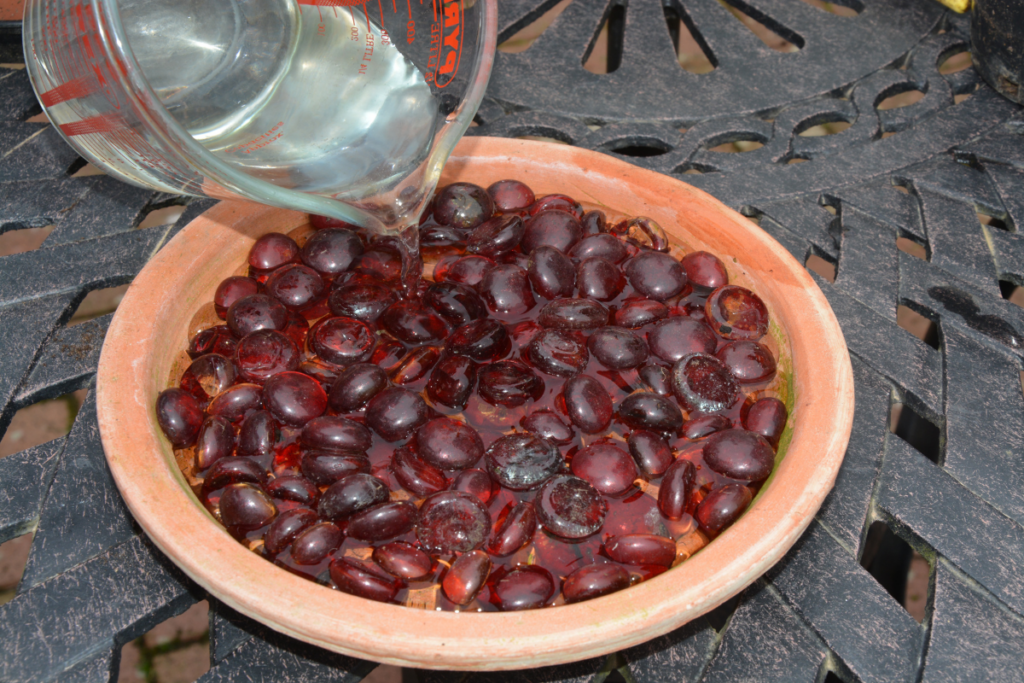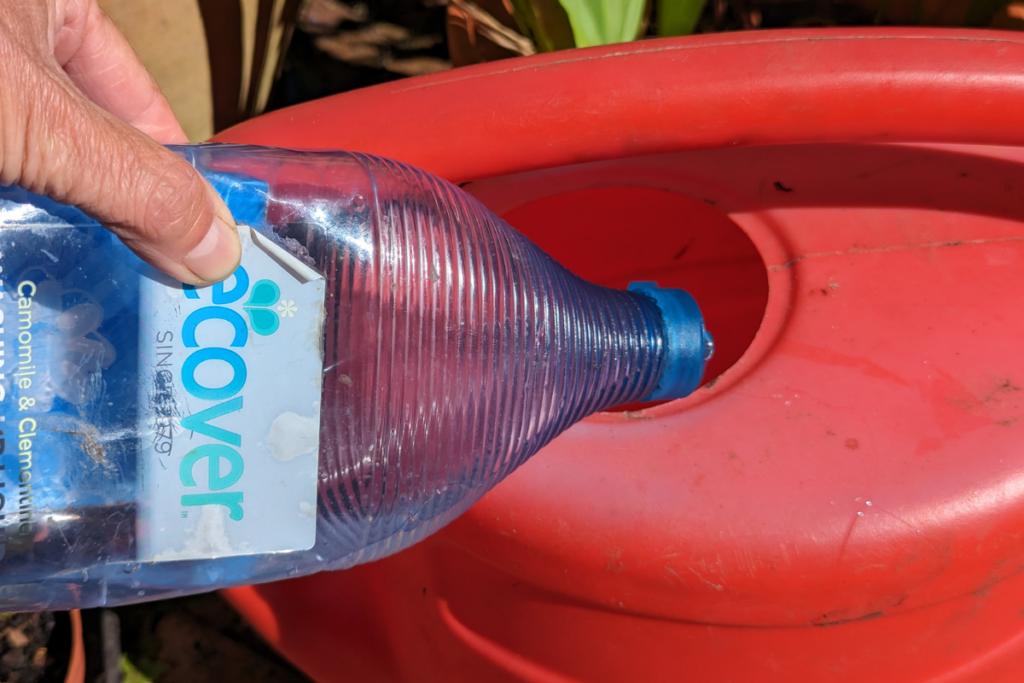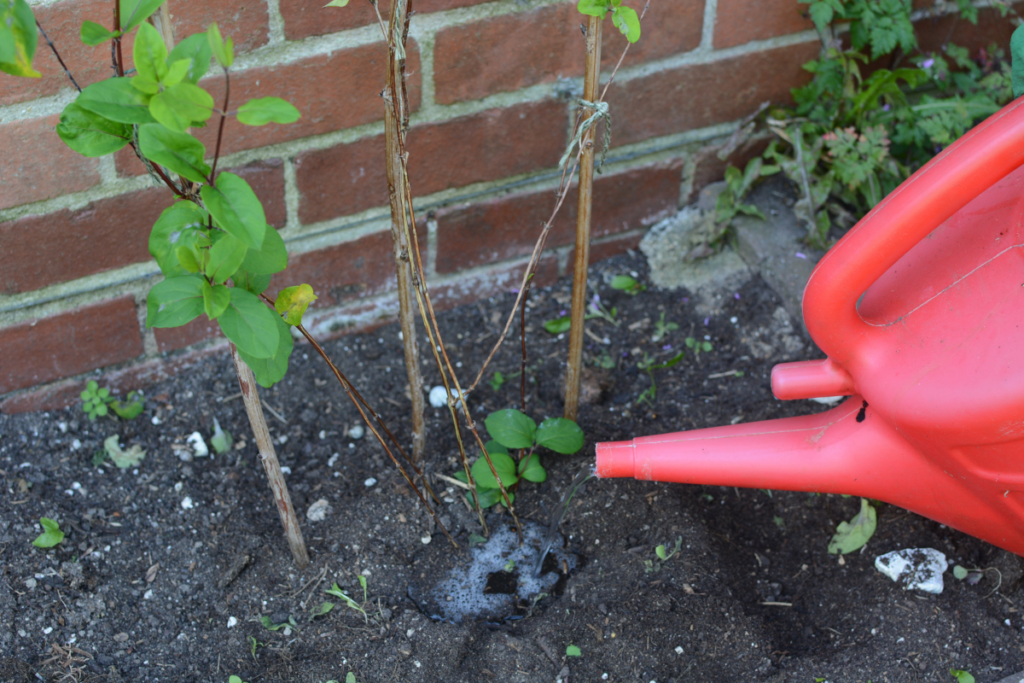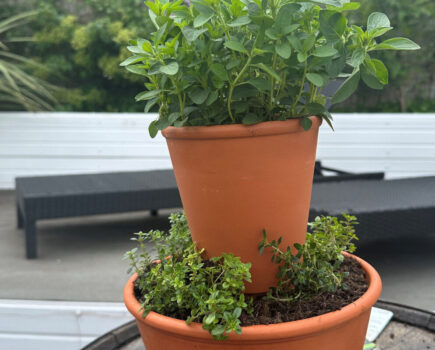Ruth finds that there’s lots to do, from dawn til dusk
Much as I would like to spend the tail-end of July sitting in a shady nook in the garden with a glass of something chilled and an unputdownable novel, there is work to be done!
The days start with watering, if needed, because this is one of the best times to give your plants a drink, as the air is still cool and moisture is slower to evaporate. If I don’t have time to water first thing I’ll wait until the evening when, again, the air is cooler.
This summer being what it is, it’s hard to anticipate what the weather will bring to the garden. Even if we do get heavy rain after a dry spell, plants may still need additional watering because rain can simply roll off very dry soil or not soak down enough to bring any benefit.
Give plants a good soaking when you water, using grey water from the washing up or harvested rainwater if possible. It’s much better to give them a proper dousing a couple of times a week than a light sprinkle every day, and always ensure the water hits the soil so it can get to the roots, rather than dampening the leaves and flowers.
This week I’ve been planting out the last of our seed-grown nasturtiums, one of my favourite plants.
I love their vivid colours and the peppery taste of their petals when added to salads and I’ve grown a succession of them to dot around the garden.
This final batch has been added to the raised beds in our fruit and veg area, because nasturtiums make excellent companion plants, attracting cabbage white butterflies who lay their eggs on their leaves rather than on our precious crops.
Their nectar-rich blooms also bring pollinators and pest predators, so everyone benefits from their presence.

I’ve also got a row of Tagetes (French marigolds) in a veg bed, because scientists have discovered that their smell repels whitefly, making them an excellent companion plant for tomatoes. They look pretty and are so much nicer to use than chemical sprays.
While everything is growing like mad, there is the daily round of deadheading to do and also weeding – this summer’s warm, wet conditions have created bumper conditions for unwanted plants.
Most of them are slung on the compost heap, the exceptions being really sturdy perennial weeds, anything invasive, or which can grow through its roots, and the ones that have slipped through my net of vigilance and been left to flower and set seed.
If added to the heap, ripe seeds will simple sit and wait in the warm compost and then spring back to life when spread around the garden. So, the simple solution with un-compostable weed debris is to drown it all in a bucket of water over a few weeks, before then making use of the leftovers by composting them.
Be water wise
Canny tricks for irrigation

1. If container or growbag compost has been left too long between waterings it can be very hard to re-wet. A couple of drops of gentle washing up liquid added to a watering can will break the surface tension and help the water soak in.

2. Very dry soil will repel moisture, so the best way of making sure water gets to the plant roots, can be to create a soil moat around your plants. This will hold the water long enough for it to sink down without escaping.
Let’s have a drink
- Plants aren’t the only garden inhabitants that need watering in summer.
- Spare a thought for the birds, animals and insects that don’t have access to running water.
- Make sure bird baths are refreshed frequently and there are saucers of fresh water in safe areas around the garden for birds, hedgehogs and other critters to drink from.
- Wash them out several times a week to help prevent the spread of disease. (This always causes me anxiety because there’s a colony of ants living under one of our hog drinking bowls and I hate disturbing them when I wash it out!).
- Insects can take moisture from plants and mud, but you can also make their own drinking stations by filling a saucer with pebbles and filling it with water.
- This allows insects and invertebrates to perch safely while they take a refreshing drink.
Find more tips, advice and articles like this at the Amateur Gardening website. Subscribe to Amateur Gardening magazine now





